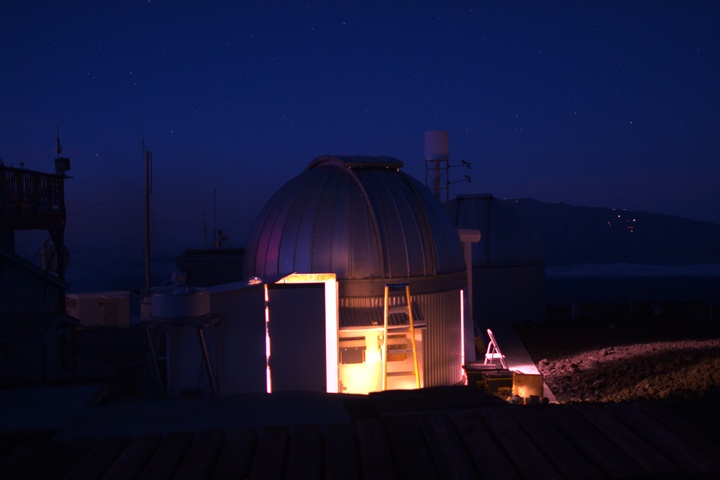
 |
Video of prototype 1 installation at Mauna Loa Observatory (Dec 30, 2010). |
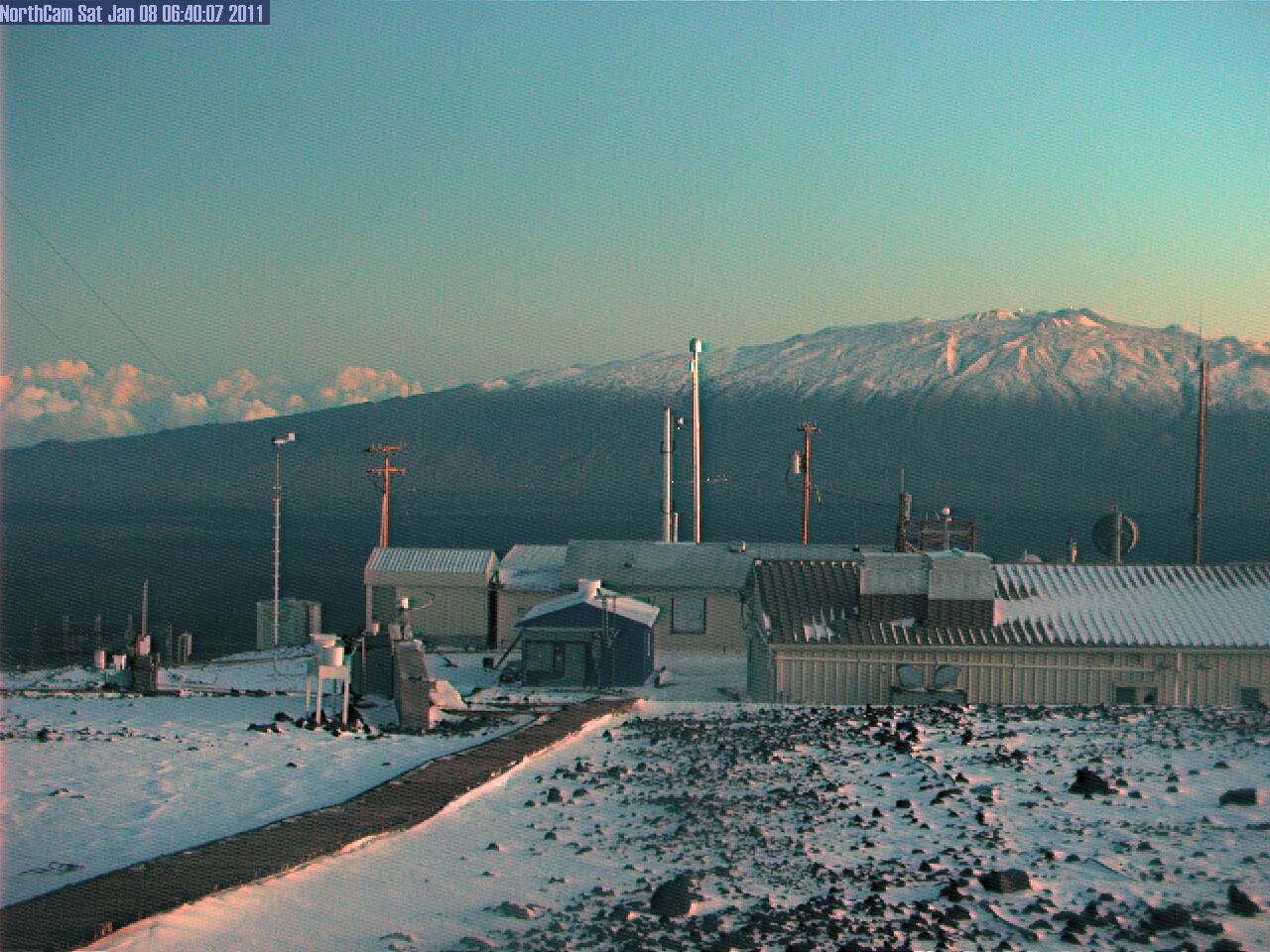 |
Snow-covered Mauna Loa observatory, with Mauna Kea in the background, Jan 8, 2011. Image by Mauna Loa Observatory North camera. |
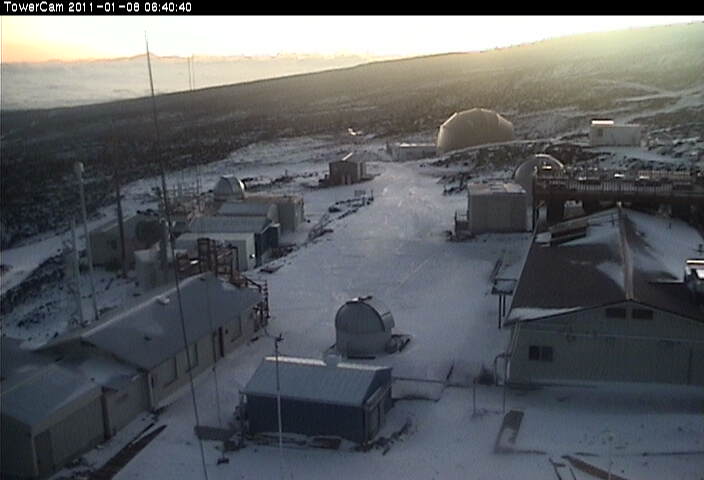 |
Snow-covered Mauna Loa observatory, looking East, Jan 8, 2011. The camera system is just outside the image, to the right. Image by Mauna Loa Observatory tower camera. |
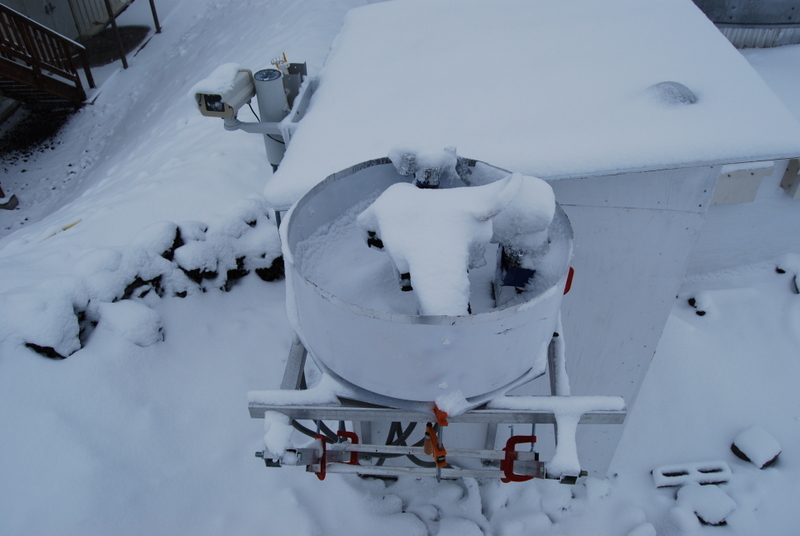 |
Snow-covered camera and mount, Jan 19, 2011. Image by Ben Berkey, Mauna Loa Observatory |
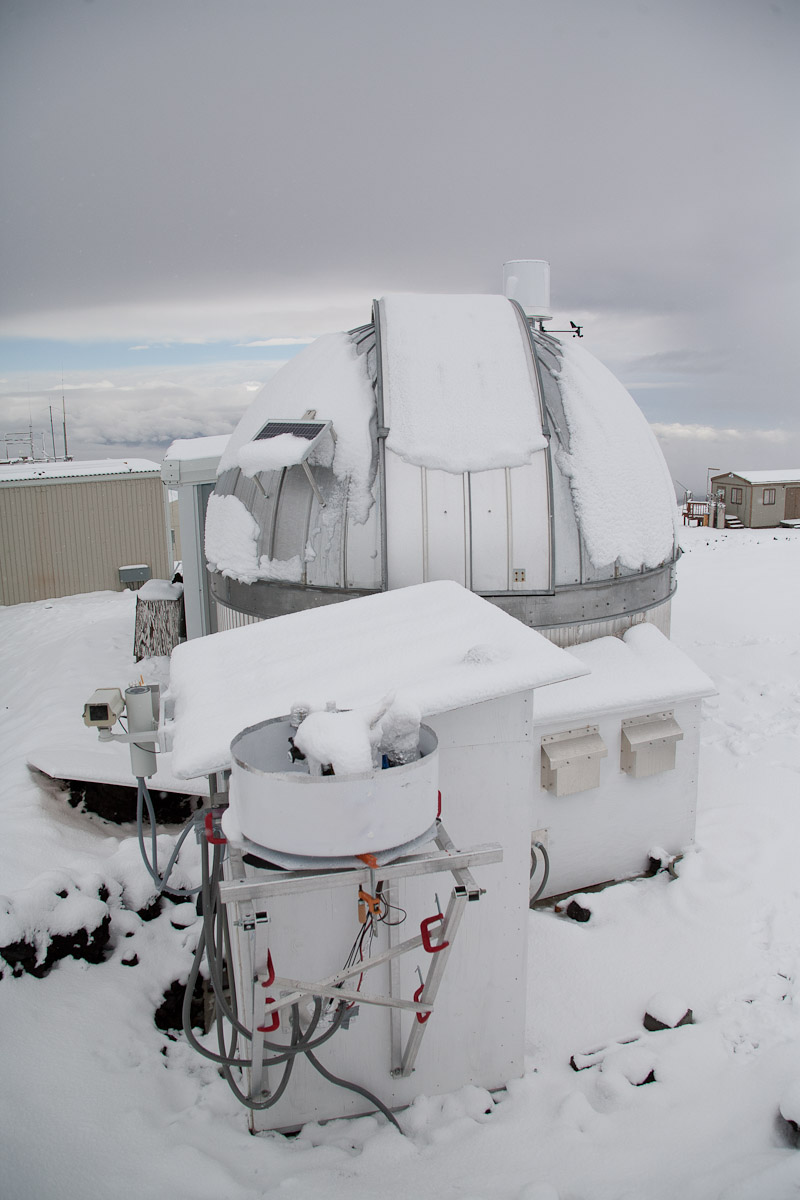 |
Snow-covered camera and mount, wide view, with VYSOS dome in the background, Jan 2011. Image by Josh Walawender, VYSOS / University of Hawaii. |
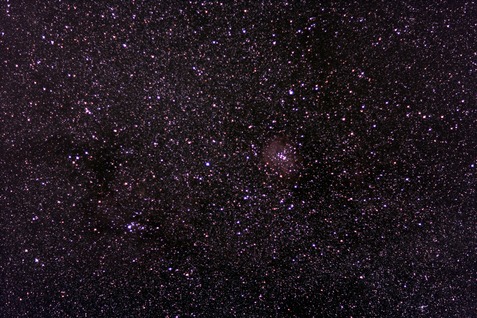 |
Image of a field centered near the Rosette Nebula, March 1, 2011 (UT). Single 315 sec exposure time at ISO 100. |
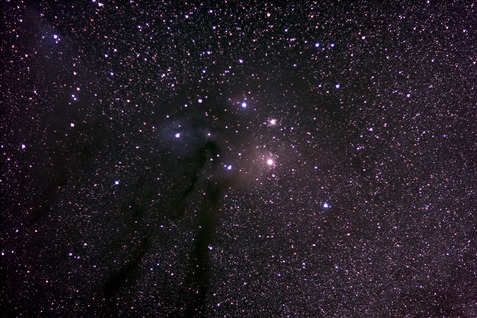 |
Image of a field centered near Antares, March 1, 2011 (UT). Single 362 sec exposure time at ISO 100. |
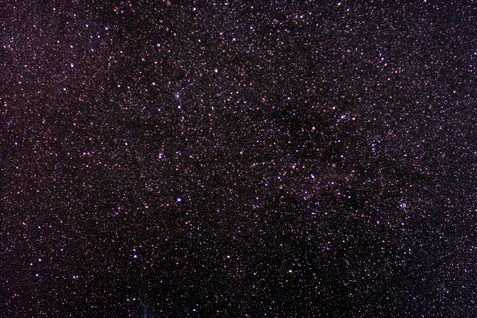 |
Image of a field centered near Z Cma, March 30, 2011 (UT). Single 303 sec exposure time at ISO 100. |
During the night of Apr 11 2012 (UT), the cable carrying the power to the mount's motors failed. I had used a standard coax cable, which does not have a braided core, and part of the cable was bent with a small radius of curvature. After more than one year of bending the cable back and forth, the core snapped during the night, and the mount was left stuck pointing up. Thanks to Ben Berkey (MLO) for noticing quickly that something was wrong, and for covering up the system the next day. The main risk for the system is that the Sun enters the FOV during the day and damages the camera/lens. The system was stuck in a position such that the Sun did not enter the FOV, but passed fairly close to it (more on this later on).
I took the system down to Hilo. Finding and fixing the problem was fairly easy, and I took advantage of this interruption to perform various minor upgrades on the system. However, after the system was re-installed at MLO, bright stars were surrounded by a faint large halo of bluish light, as can be seen in the example picture below.
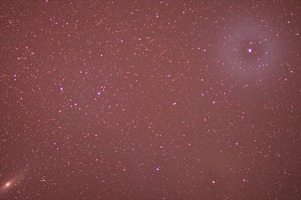 |
Image showing the halo around bright stars, July 27, 2012 (UT). |
These annoying halos were seen in both cameras, and did not go away. After a few weeks, I decided to investigate the problem on-site by removing the lenses from the camera bodies. I was horrified to find that the sunlight had melted plastic inside the camera body and that the fumes had coated the back of the lens assembly for both lenses.
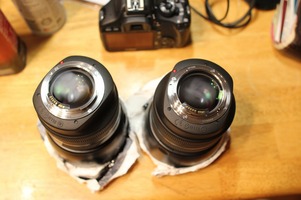 |
Backside of the 85mmF1.2 lenses, with a haze clearly visible. The haze is due to sunlight burning plastic inside the camera after the power cable failure. |
Cleaning this haze was difficult, as (1) conventional lens cleaning solutions did not do anything and (2) the fumes had moved inside the lens assembly and coated more that one surface. I used acetone to clean the haze, and partial disassembly of the lenses was necessary to reach all surfaces affected. The cleanup was very successful.
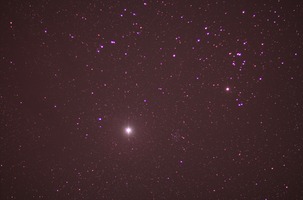 |
Jupiter in the Hyades, Aug 16, 2012 (UT). |